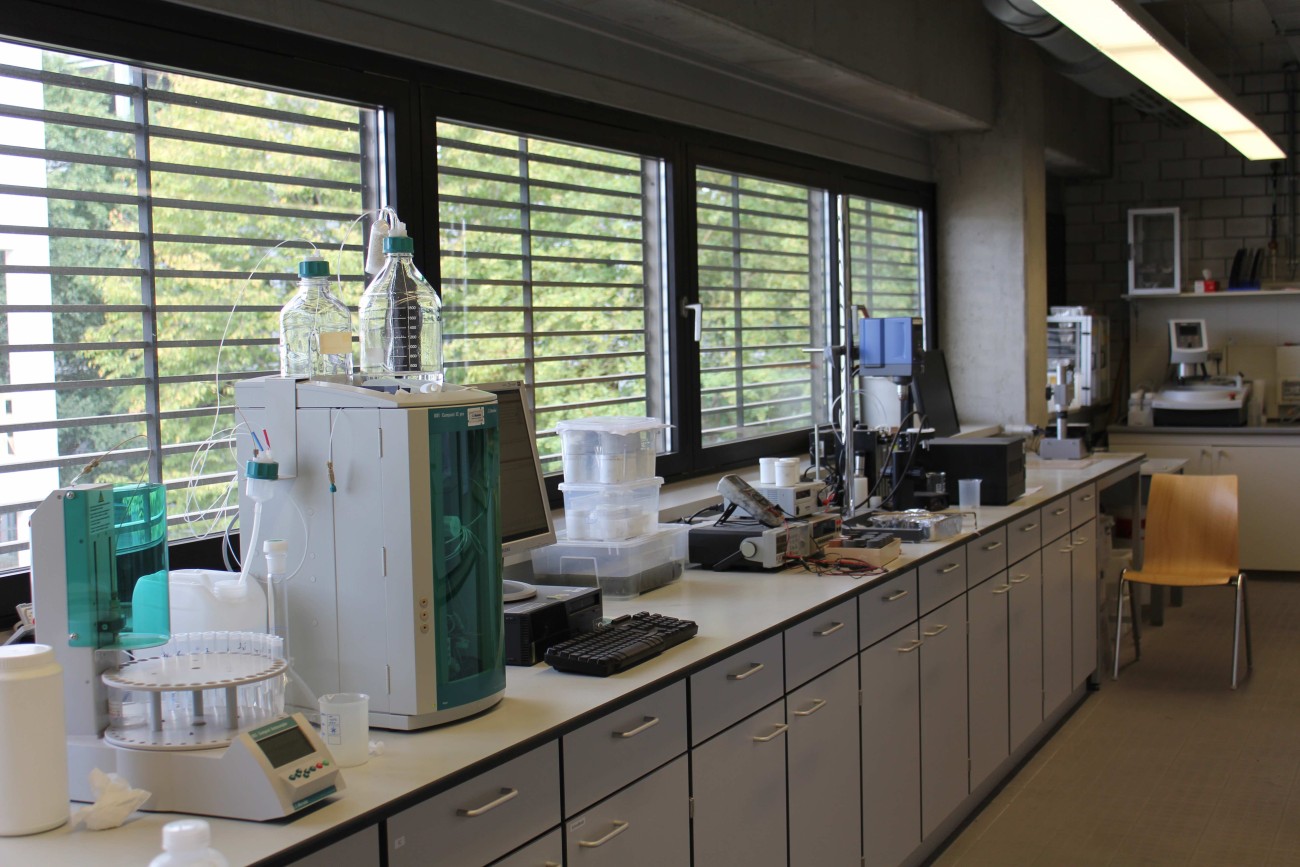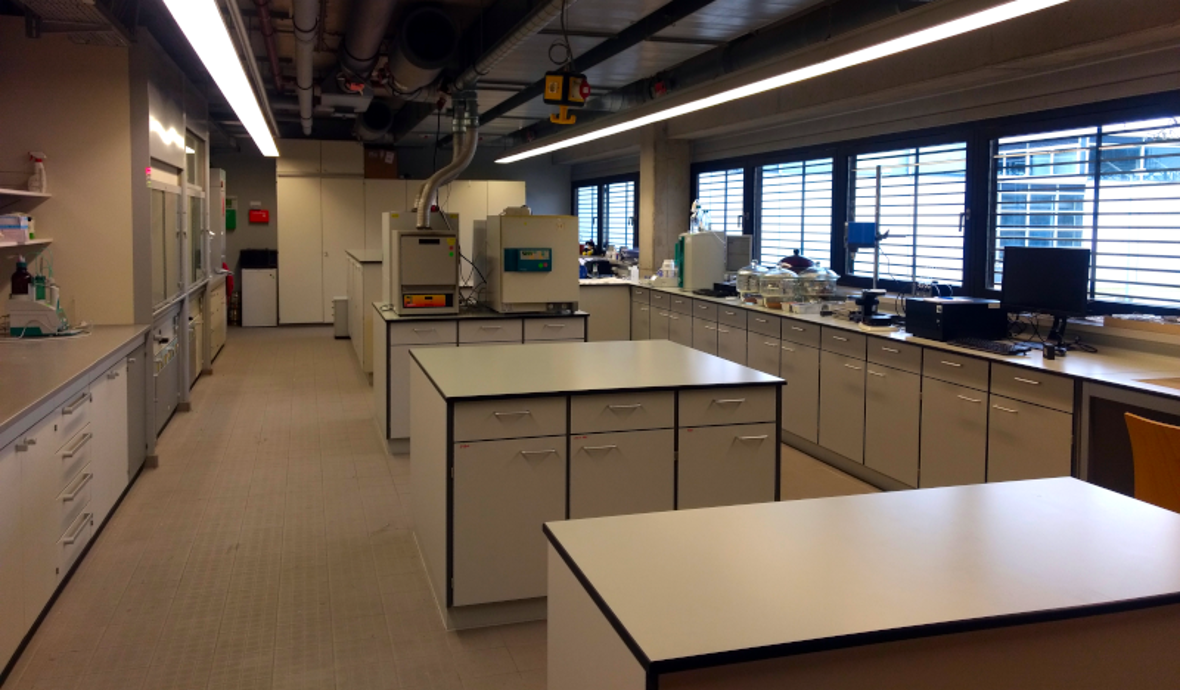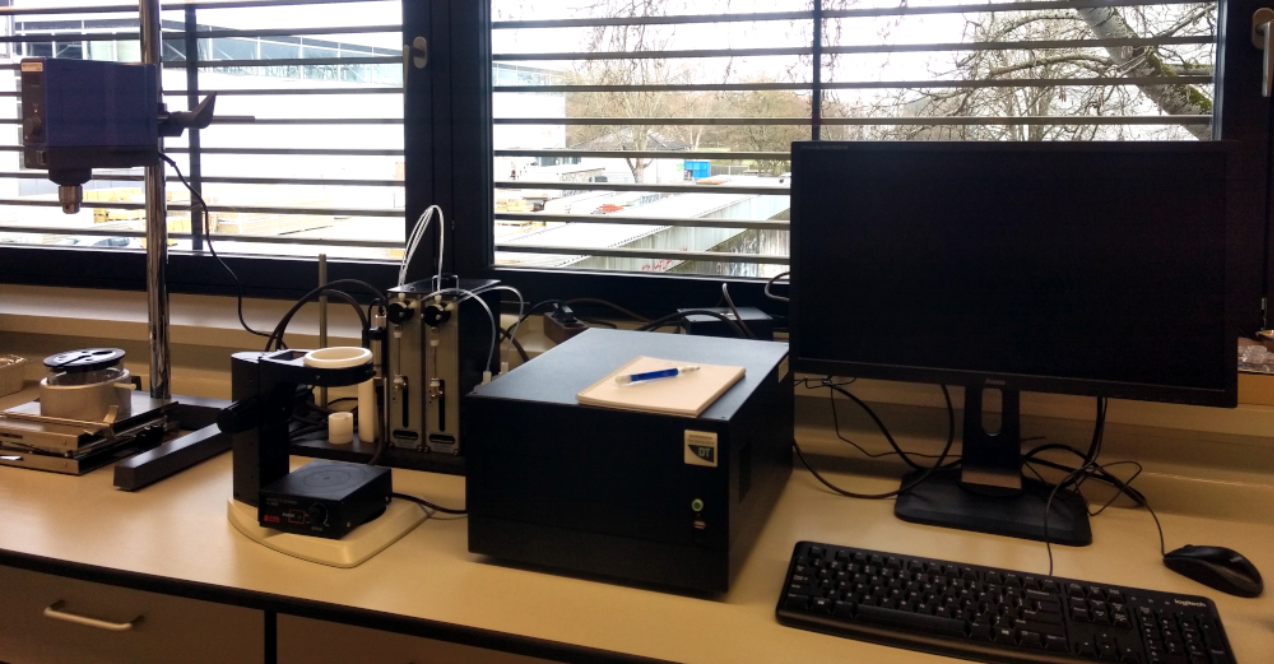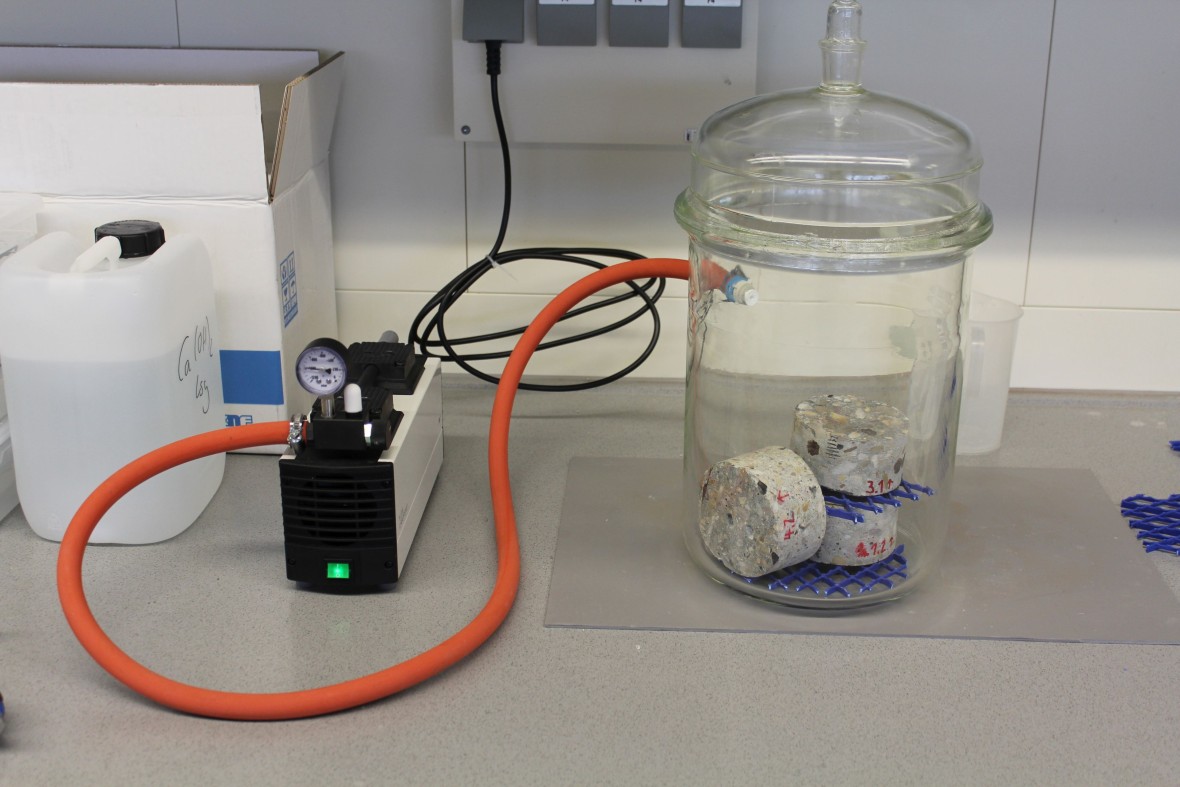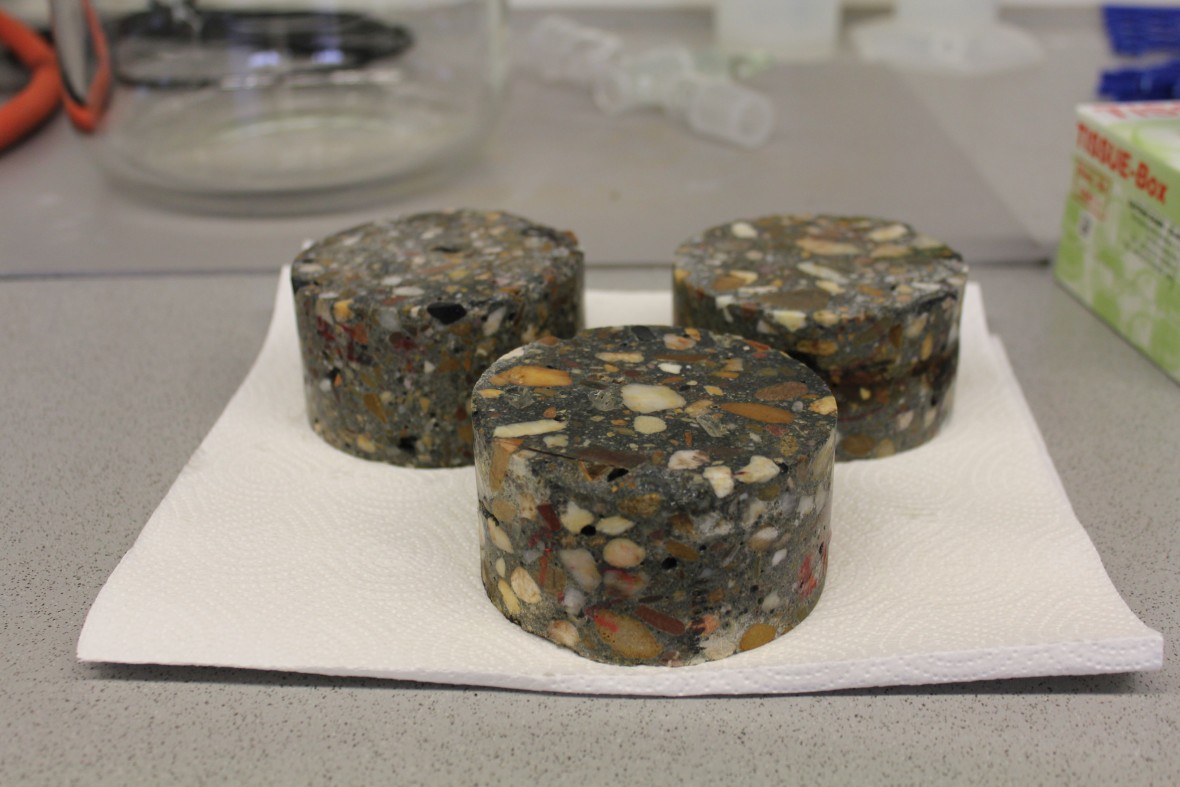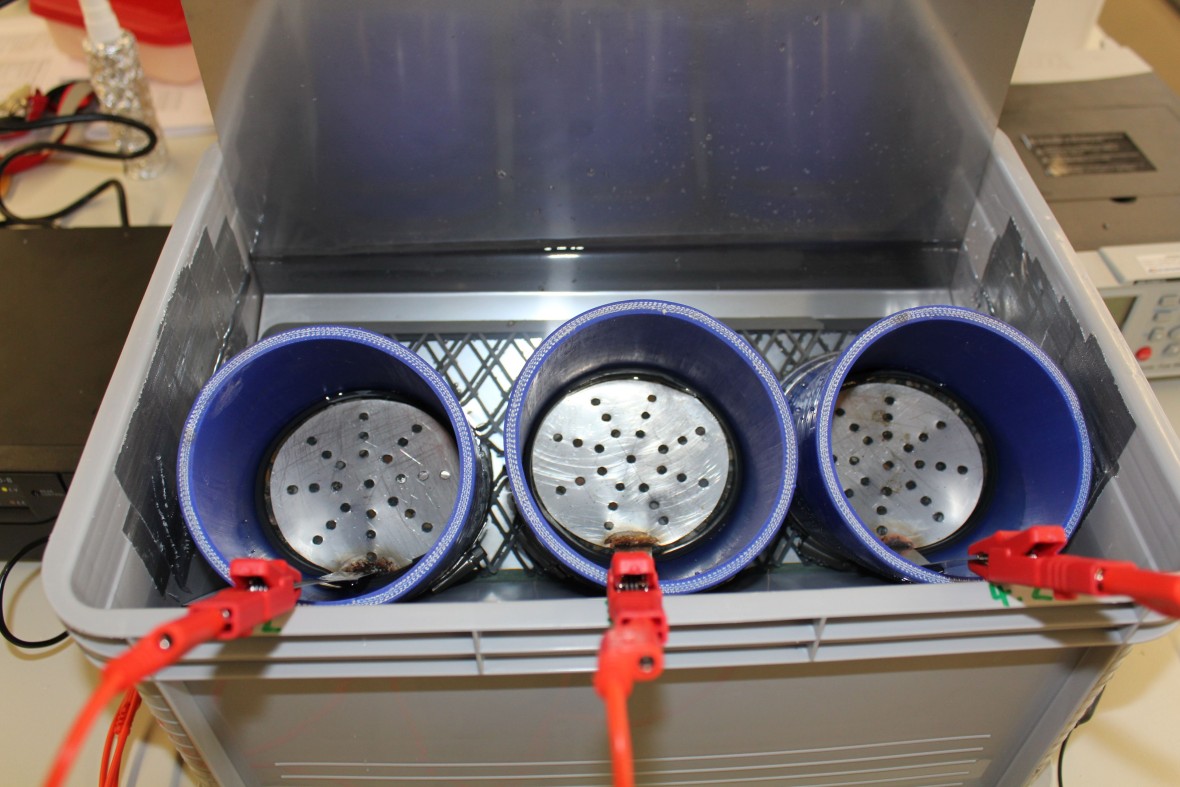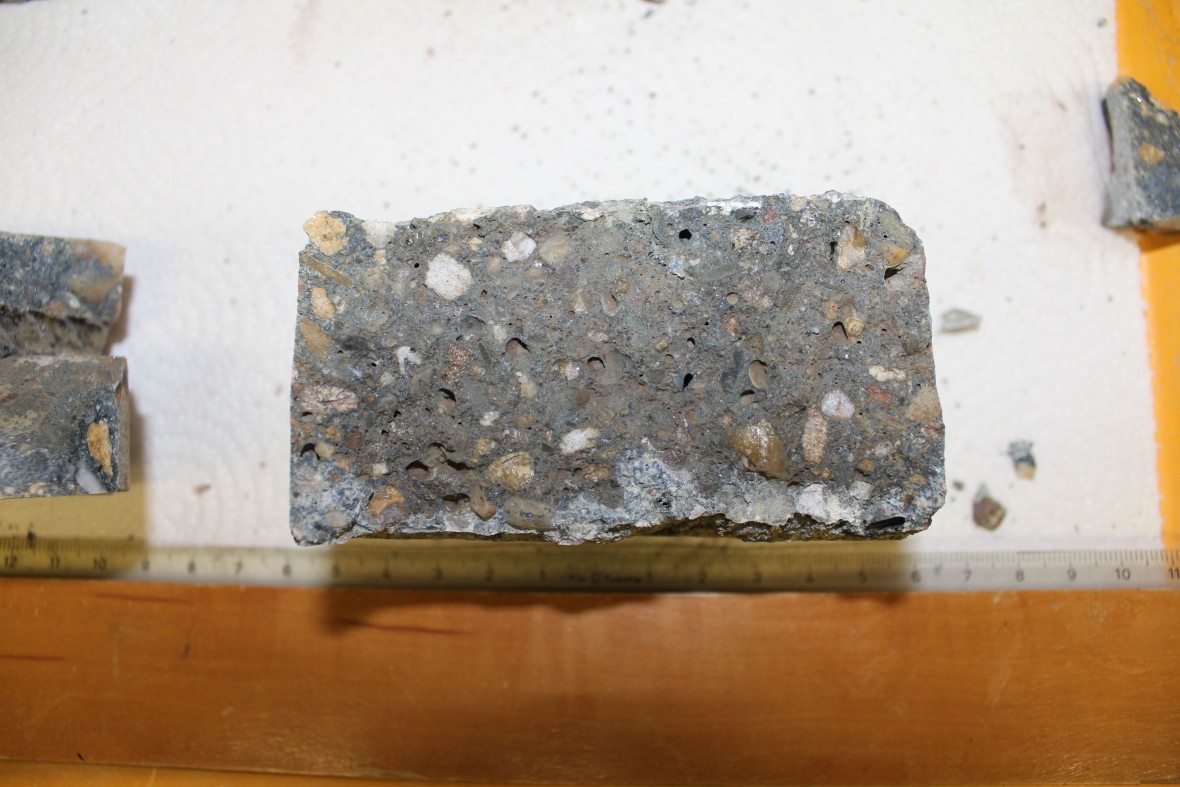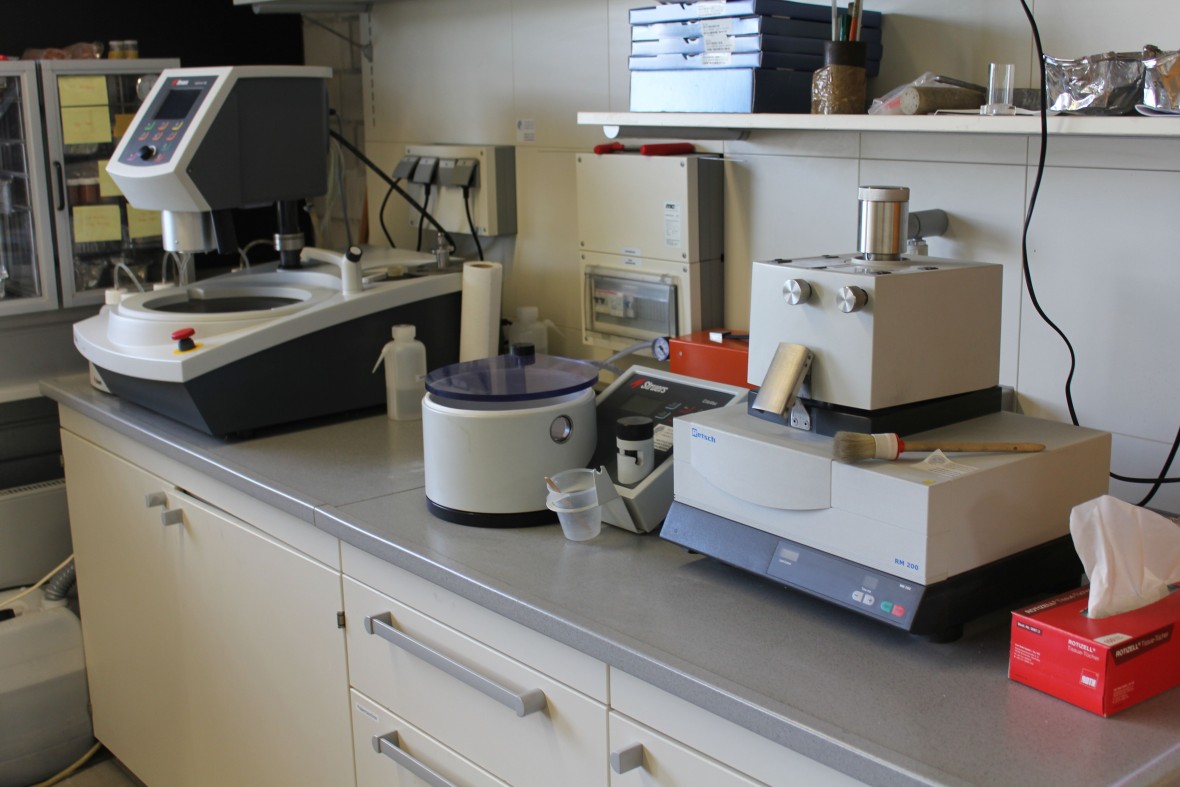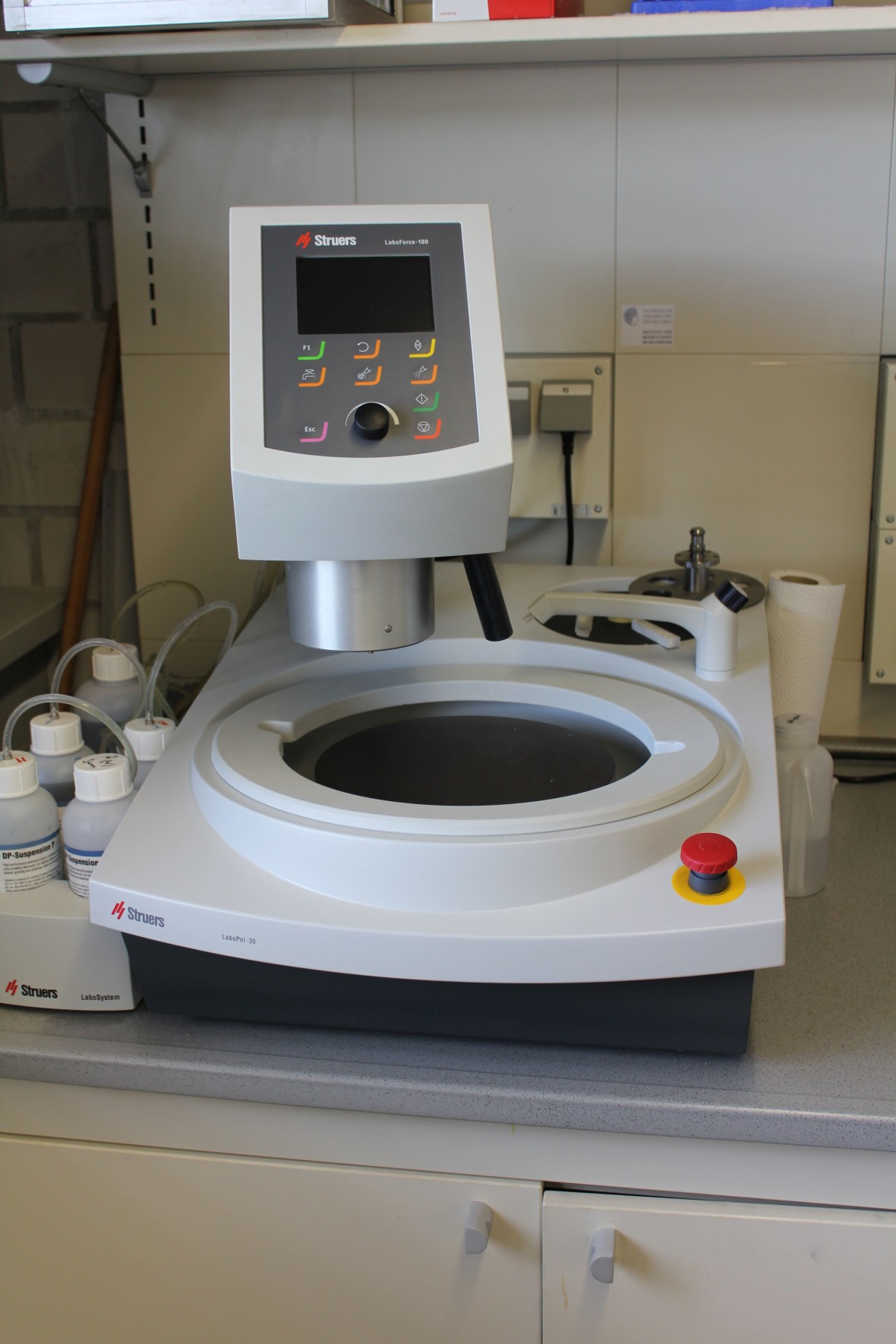Our laboratory equipment:
More detailed information on a selection of the experimental possibilities in our chemistry laboratory can be found here.
High-temperature furnace
Model:
RWF 1100 and RHF 1600 Carbolite Gero
Brief Description:
The two chamber furnaces from Carbolite Gero are used for various experiments to determine thermal properties or to initiate processes through thermal energy. Both furnaces have control options for ramp, set point and process timer functions to run special heating programs. Short heat-up times (RWF 1100 can be heated to 1100°C within 10 minutes, RHF 1600 can be heated to 1600°C within 40 minutes) and large volumes (RWF 1100 23 liters; RHF 1600 15 liters) coupled with effective heating elements allow the installation of larger samples and guarantee uniform temperature distribution within the firing chamber.
RWF 1100:
- Maximum temperature: 1100°C
- Chamber volume: 23 Liter
- Short heat-up time
- Fast heating and cooling rates
- Controllable for ramp, set point and process timer function
RHF 1600:
- Maximum temperature: 1600°C
- Chamber volume: 15 Liter
- Short heat-up time
- Fast heating and cooling rates
- Controllable for ramp, set point and process timer function
Ion chromatograph
Model:
881 Compact IC pro from Metrohm (Cation)
Short description:
Ion chromatography can be used to identify and quantify chemical complexes, anions and cations in aqueous systems. At WiB the device is set up for cation investigations. For this purpose, a sample is taken from a prepared aqueous solution with the aid of an autosampler and passed over a column. The respective ion is retained in this column as a function of its mass. In this way, the duration of the run time (column start to detection) can be used to determine which substance is involved.
In our laboratory, different eluates, e.g. from experiments on chemical attacks, can be analyzed. This helps to understand the reaction and can provide information about dissolved ions.
Pore solutions can also be examined, which in turn can provide information about alkalinity and, in turn, about durability in special environments.
Zeta potential analyzer
Modell:
Zeta potential analyzer (DT-310, 3P-instruments.com)
Brief Description:
Every particle possesses a surface charge. In a suspension or emulsion, ions of the surrounding medium accumulate on the particle surface, leading to a charge balance. A Helmholtz double layer and a loosely bound diffuse layer are formed. When the particle moves, shearing occurs in the loosely bound layer so that the particle is no longer electrically neutral. It has a potential at this shear boundary, which is called the zeta potential.
The zeta potential is a relative measure of the surface potential (i.e., charge) of a particle.
The zeta potential is determined by measuring the velocity of the particle through an applied electric field.
The zeta potential plays an important role in the analysis of finely dispersed substances in a dispersing medium. Thus, among other things, optimized dosages, targeted phase separation processes (precipitation mechanisms) or bacteriostatic effects can be determined.
Rapid Chloride Migration (RCM)
Test:
Chloride penetration using Rapid Chloride Migration test according to NT Build 492
Brief description:
With the so-called Rapid Chloride Migration (RCM) test according to NT Build 492, the chloride penetration coefficient of a sample can be determined within a relatively short test period. This coefficient describes how fast the chloride ions can penetrate through the pore system of the concrete or cement paste.
The test is carried out with slices from drill cores. These are saturated with a calcium hydroxide solution (Ca(OH)2) under vacuum.
For the actual test, each specimen is placed in a separate “migration cell”. These cells do not allow any liquid contact between the surface of the specimen and the test liquid except for the frontal surfaces.
First, an initial voltage is applied. By measuring the current flowing through the test specimens, a correction to the voltage is made using tabulated values and the test duration is determined.
The specimens are split longitudinally and the cross-section is sprayed with a silver nitrate solution. Chloride penetration can be detected and measured by color indication.
By measuring several points, a diffusion coefficient can be determined for calculating the corrosion risk.
This method can be used to model long-term behavior. This can be used in the context of expert reports or to determine the chloride penetration resistance of building materials.
Sample preparation
Models:
CitoVac by Struers, LaboForce 100 by Struers, RM 200 Retsch
Brief Description:
Sample preparation is where the process of examination begins. Errors made here can lead to incorrect test results.
To minimize this error, we have protocols for sample preparation and handling.
For effective sample preparation, we have a vacuum impregnator (CitoVac from Struers) for embedding samples for further tests and examinations, as well as a matching polisher (LaboForce 100 from Struers). Especially for optical examinations (light microscopy, scanning electron microscopy) well treated surfaces are an absolute necessity.
However, we can also prepare experiments with special geometric requirements using our preparation.
Many tests are performed with powdered materials. In order to be able to examine also the hardened binders or to homogenize samples, we own a mortar grinder RM 200 from Retsch. With this we can generate reproducible results, wet and dry grinding (closed, dust-tight grinding chamber with viewing window) and have no problems grinding hard materials due to the high hardness of the mortar and pestle material (agate).

